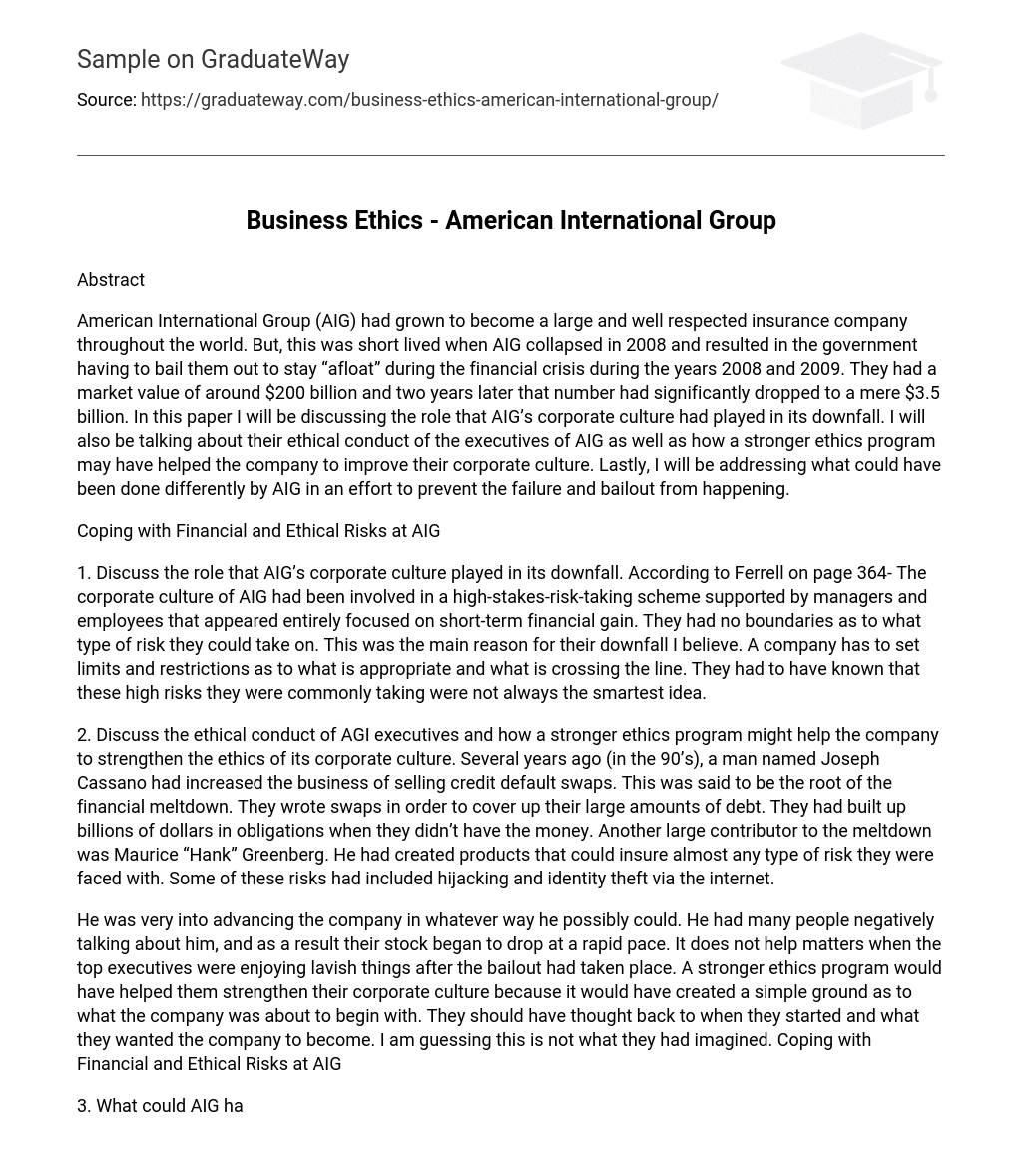Abstract
American International Group (AIG) had grown to become a large and well respected insurance company throughout the world. But, this was short lived when AIG collapsed in 2008 and resulted in the government having to bail them out to stay “afloat” during the financial crisis during the years 2008 and 2009. They had a market value of around $200 billion and two years later that number had significantly dropped to a mere $3.5 billion. In this paper I will be discussing the role that AIG’s corporate culture had played in its downfall. I will also be talking about their ethical conduct of the executives of AIG as well as how a stronger ethics program may have helped the company to improve their corporate culture. Lastly, I will be addressing what could have been done differently by AIG in an effort to prevent the failure and bailout from happening.
Coping with Financial and Ethical Risks at AIG
1. Discuss the role that AIG’s corporate culture played in its downfall. According to Ferrell on page 364- The corporate culture of AIG had been involved in a high-stakes-risk-taking scheme supported by managers and employees that appeared entirely focused on short-term financial gain. They had no boundaries as to what type of risk they could take on. This was the main reason for their downfall I believe. A company has to set limits and restrictions as to what is appropriate and what is crossing the line. They had to have known that these high risks they were commonly taking were not always the smartest idea.
2. Discuss the ethical conduct of AGI executives and how a stronger ethics program might help the company to strengthen the ethics of its corporate culture. Several years ago (in the 90’s), a man named Joseph Cassano had increased the business of selling credit default swaps. This was said to be the root of the financial meltdown. They wrote swaps in order to cover up their large amounts of debt. They had built up billions of dollars in obligations when they didn’t have the money. Another large contributor to the meltdown was Maurice “Hank” Greenberg. He had created products that could insure almost any type of risk they were faced with. Some of these risks had included hijacking and identity theft via the internet.
He was very into advancing the company in whatever way he possibly could. He had many people negatively talking about him, and as a result their stock began to drop at a rapid pace. It does not help matters when the top executives were enjoying lavish things after the bailout had taken place. A stronger ethics program would have helped them strengthen their corporate culture because it would have created a simple ground as to what the company was about to begin with. They should have thought back to when they started and what they wanted the company to become. I am guessing this is not what they had imagined. Coping with Financial and Ethical Risks at AIG
3. What could AIG have done differently to prevent its failure and subsequent bailout? AIG could have developed a fine line or boundary as to what type of risk was too much to take on. The higher the risk they took on, the more it should have been to the customer. I am surprised that they were not doing that already. They also could have increased their transparency and accountability right from the start. This would mean that they would have had to realistically state their assets and liabilities. They also entered into a market that they had not done too much research on. The market had a lot of money, which is what made them intrigued.





